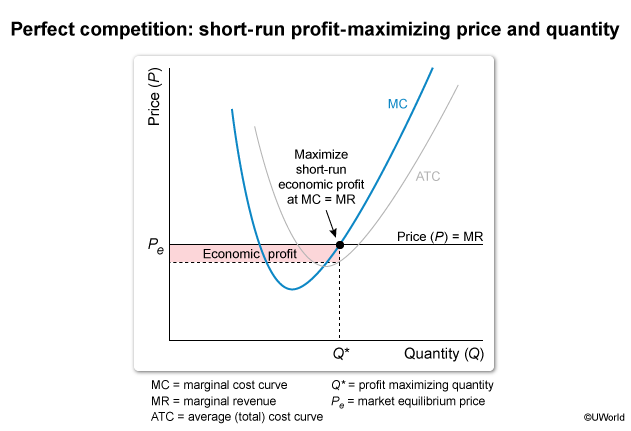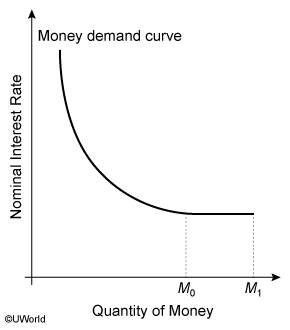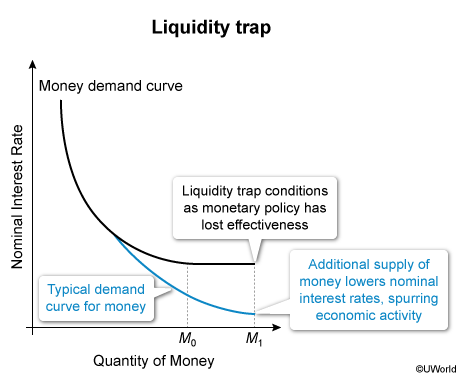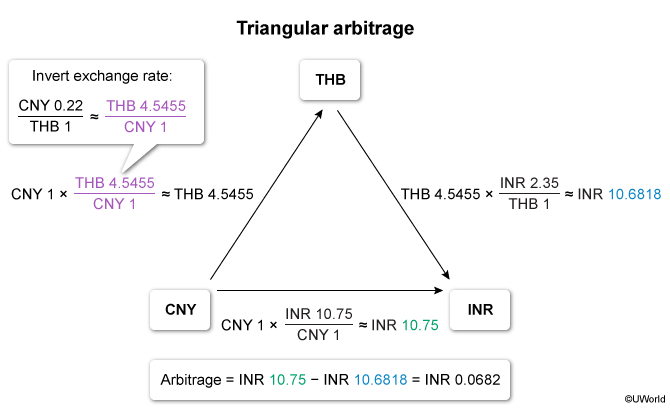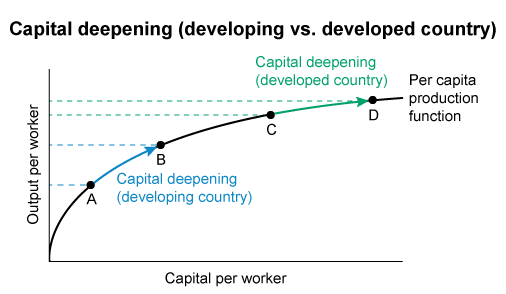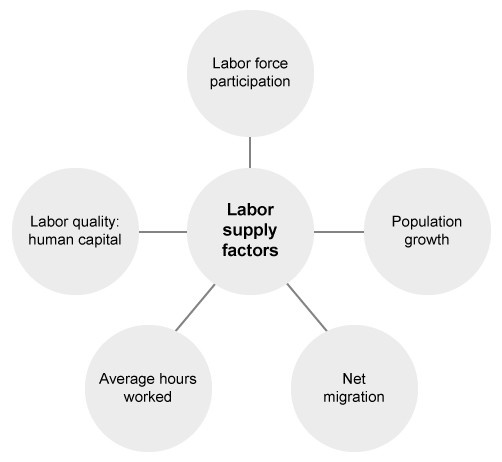CFA® Economics
The CFA Economics 2024 curriculum primarily focuses on economic theories and frameworks that serve as the basis for various analyses within the CFA program. Approximately 60-70% of the content covered in the CFA Economics curriculum aligns with typical introductory macro and microeconomics courses commonly taught at the college level.
The remaining 30-40% of the curriculum delves into a diverse array of topics, including different schools of economic thought, price indexes, business cycles, currency markets, exchange rates, and more. This distribution of topics maintains a consistent exam weighting across all levels of the CFA exam cycle.
Building a solid foundation in micro- and macroeconomic principles is crucial, as it will yield significant benefits for candidates as they progress through the CFA curriculum and encounter more intricate financial concepts.
What to Expect in CFA Level 1 Economics?
In CFA Level 1 Economics, you will delve into fundamental micro- and macroeconomic principles that are essential for financial and investment analysis. Although Economics carries a weight of 6-9% on the exam, which is relatively lower compared to Ethics and Financial Statement Analysis, it is equally important as other subjects. Throughout this course, candidates will gain insights into crucial aspects of economic forecasting, top-down investment analysis, and bottom-up security selection strategies.
Exam Weighting
The CFA Economics topic has a weighting of 6-9% of the exam, so approximately 11-16 of the 180 CFA Level 1 exam questions focus on this topic.
| Topic Weight | No. of Learning Modules | No. of Formulas | No. of Questions |
|---|---|---|---|
| 6-9% | 8 | ca. 60 | 11 – 16 |
Level 1 Economics 2024 Syllabus, Learning Modules, and Changes
CFA Level 1 Economics’ syllabus for 2024 spans 8 learning modules and contains 30 LOS. The CFA Level 1 exam has very minor updates to the overall structure for economics, with a little bit of reshuffling in the learning outcomes.
The Firm and Market Structures
Market structures are intimately tied to how firms price their products and their potential profitability. For example, long-term profits are typically decreased in highly competitive markets but still attainable in less competitive markets. Familiarity with the effects of various market forces is a boon to financial analysts when evaluating a firm’s short- and long-term prospects.
- Candidates will learn to distinguish between various market structure classifications and how each structure influences the outcomes of demand and supply relations.
- The reading also covers the competition and interaction of companies in various market conditions, such as perfect competition, monopolistic competition, oligopoly, and pure monopoly.
Understanding Business Cycles
Typical business cycles and phases exist within economies despite their complexity. Understanding cycle phases aids the analyst in projecting how outcomes and decisions of both individuals and firms affect the performance of sectors and companies.
- Candidates will familiarize themselves with the business cycle and its phases and how various economic factors fluctuate accordingly.
- Furthermore, the reading elaborates on methods to interpret a set of economic indicators and covers measurements of inflations.

Monetary and Fiscal Policy
Governments in developed countries have an outsized impact on their economies due to the size of the workforce they employ and of their fiscal budgets. This influence is augmented by taxation and spending decisions (fiscal policy) and a central bank’s influence over credit and the quantity of money (monetary policy).
- This reading introduces how money is created, the role of central banks, and various theories regarding the demand for and supply of money.
- Candidates will learn to distinguish between expansionary and contractionary monetary policies and the advantages and disadvantages of various tools for implementing fiscal policies.
Introduction to Geopolitics
Geopolitics is closely related to globalization, as the interconnectedness of the world’s economies and political systems has increased in recent decades. This has led to both cooperation and competition between countries as they seek to advance their own interests in an increasingly interconnected world.
- The reading analyzes geopolitics from the perspective of cooperation versus competition
- Candidates will learn how to assess geopolitics and its relationship with globalization
- Explores tools of geopolitics and their impact on regions and economies
- Analyses geopolitical risk and its impact on investments
International Trade and Capital Flows
The attractiveness of a global investment may come down to a particular country’s economic robustness, its price stability or interest rates, or the strength of a specific sector or industry, or GDP growth rates, trade policies, demographics, human capital, etc.
- This reading explores the benefits of international trade and describes the dynamics of trading blocs, common markets, and economic unions.
- Candidates will study how international financial organizations influence and facilitate international trade and the implications of various trade and capital restrictions.
Currency Exchange Rates
The global economy is becoming increasingly interwoven, and this integration is impossible without currency exchange. As a result, the foreign exchange market (FX) is the largest market on the planet. Furthermore, purely domestic portfolios are not exempt from the influences of globalization, making an understanding of foreign exchange critical for any financial analyst.
- Candidates will explore exchange rate mechanics and become familiar with major players.
- The reading also covers alternative exchange rate regimes and how exchange rates influence a country’s imports, exports, and capital flows.
CFA Economics Level 1 Sample Questions and Answers
The sample questions are typical of the probing multiple-choice questions on the L1 exam. During the exam, you have about 90 seconds to read and answer each question, carefully designed to test knowledge from the CFA Curriculum. UWorld’s question bank is built to expose you to exam-like questions and illustrate and explain the concepts tested thoroughly.
In the short run, a company maximizing profit in a market with perfect competition produces at a quantity that most likely results in:
- economic profits equal to zero.
- marginal revenue equal to marginal cost.
- market price greater than marginal revenue.
A firm operating under perfect competition maximizes economic profit by producing and selling at the quantity where marginal revenue (MR) equals marginal cost (MC). Cost in this context includes opportunity costs (eg, the owners’ required return from the business). Perfectly competitive firms can earn economic profits in the short run, but even if economic profits are zero or negative, a firm may be earning an accounting profit.
MR, the incremental revenue from selling one additional unit, depends on the firm’s demand curve. In the case of perfect competition, the demand curve for any individual firm is a horizontal line at the market equilibrium price, since demand is perfectly elastic. Therefore, market price equals MR at all quantities (Choice C).
MC, the incremental cost to produce one additional unit, depends on the firm’s cost structure. Producing at a quantity greater than where MR = MC means that the incremental cost for each unit exceeds the incremental revenue generated by that unit and the firm generates a loss on each additional unit sold. Producing at a lower quantity means that the firm forgoes economic profit (in the short run) since the additional revenue from a unit sold would exceed the cost of the unit.
(Choice A) Perfectly competitive firms can earn economic profits in the short run. However, in the long-run, the positive economic profits will attract new firms, which will increase supply/lower price until economic profit is zero.
Note: Although this question specifically addresses perfect competition, the condition that firms optimally produce when MR = MC applies to all market structures. It is likely that the exam will have questions on this topic.
Things to remember:
Under perfect competition, a firm maximizes short-run economic profit by producing and selling at the quantity where marginal revenue (MR) equals marginal cost (MC). Since there is perfectly elastic demand, price also equals MR for all quantities. Short-run, but not long-run, economic profits are possible. However, a firm may earn an accounting profit even if economic profits are zero or negative.
Copyright © UWorld. All rights reserved.
A demand curve for money is depicted in the graph below:
Which of the following best explains the shape of the curve between M 0 and M 1?
- Liquidity trap
- Policy rate of zero
- Neutral rate of interest
There are limits to the effectiveness of monetary policy. This is often true in a deflationary environment when the demand curve for money becomes horizontal (ie, infinitely elastic), as shown in the graphs above. A liquidity trap occurs when the quantity of money continues to expand but fails to lower interest rates since economic agents would rather hold cash than borrow or lend. At this point, monetary policy stops stimulating economic activity and loses its effectiveness.
A central bank’s monetary policy tools depend on others to implement them. For example, a central bank can lower interest rates or reduce reserve requirements but cannot force anyone to borrow or lend. A liquidity trap is an example of such ineffectiveness.
The economist John Maynard Keynes is credited with coining the phrase “pushing on a string” to describe the limitations of monetary policy. It is easy to visualize how pulling on a string can bring something closer and how pushing on a string has no effect since it crumples and goes nowhere. In a liquidity trap, the central bank is effectively “pushing on a string.”
(Choice B) Central bank policy is not constrained by the zero boundary; policy rates can and have been negative. The demand for money does not necessarily stagnate at a zero-bound policy rate.
(Choice C) The neutral rate of interest is the central bank’s policy rate that neither slows nor accelerates economic activity and is not specifically associated with the money demand curve.
Things to remember:
A liquidity trap results when the demand curve for money is horizontal and infinitely elastic, which often occurs in a deflationary environment. In a liquidity trap, monetary policy stops stimulating economic activity and loses its effectiveness.
Copyright © UWorld. All rights reserved.
A currency trader observes the following currency spot exchange rates from two dealers:
| Source | Currency | Exchange Rate |
|---|---|---|
| Dealer 1 | CNY/THB | 0.22 |
| Dealer 1 | INR/THB | 2.35 |
| Dealer 2 | INR/CNY | 10.75 |
Based on only this information, the arbitrage profit available per every CNY 1 is closest to:
- INR 0.0682
- INR 0.0064
- CNY 0.0682
A cross-rate is the exchange rate implied by two related exchange rates, assuming that no arbitrage opportunities exist. If the actual exchange rate differs from the no-arbitrage exchange rate implied by the cross-rate, then an arbitrage opportunity exists. An investor can profit by purchasing a currency from the source where it is underpriced and simultaneously selling the same currency to the source where it is overpriced.
Finding an arbitrage opportunity from cross-rates can be conceptualized as a triangle, as shown above. Potential arbitrage profits can be observed by moving from one currency to another in two directions around the triangle. When moving around the triangle, one currency is multiplied by the actual exchange rate to convert to another currency.
In this scenario, the INR/CNY rate from Dealer 2 is 10.75. Using the INR/THB and CNY/THB rates quoted by Dealer 1, Dealer 1’s INR/CNY cross-rate is 10.6818. The arbitrage profit is the difference between buying CNY 1 for INR 10.6818 from Dealer 1 and simultaneously selling CNY 1 for INR 10.75 to Dealer 2. The profit is INR 10.75 − INR 10.6818 = INR 0.0682 per every CNY 1 (Choice C).
(Choice B) 0.0064 is the potential arbitrage profit in CNY, not INR.
Things to remember:
If an actual exchange rate differs from a cross-rate derived from two related exchange rates, an arbitrage
opportunity becomes available by purchasing a currency from the underpriced source and selling the same currency to
the overpriced source.
Copyright © UWorld. All rights reserved.
What to Expect in CFA Level 2 Economics?
At 5-10% of the total exam content, CFA Level 2 Economics is less heavily weighted than about half of the topics on the Level 2 exam and contains only one study session. The topic readings focus on foreign exchange concepts and theories of exchange rate determination. Candidates will explore three theories of growth and how regulation affects particular industries.
Exam Weighting
The CFA Economics topic has a weighting of 5-10% of the exam content, meaning that approximately 4 – 8 item set questions or 1 – 2 item sets focus on this topic.
| Topic Weight | No. of Learning Modules | No. of Formulas | No. of Questions |
|---|---|---|---|
| 5-10% | 3 | ca. 50 | 4-8 questions; 1-2 item sets |
Level 2 Economics 2024 Syllabus, Readings, and Changes
The CFA Level 2 Economics syllabus has remained the same as in 2023, for 2024 as well, and has no substantive changes from the prior readings.
| No. of Learning Modules – 3 | No. of LOS – 34 | |
|---|---|---|
|
Summary
Introduces fundamental foreign exchange concepts and theories of exchange rate determination. Discusses three theories of growth and concludes with an overview of the regulation and its effect on industries. |
||
Currency Exchange Rates: Understanding Equilibrium Value
Exchange rate fluctuations are known to be unpredictable. Therefore, financial analysts are better off understanding long-run equilibrium value, risk exposure, and currency hedges.
- Candidates will learn about fundamental theories and important influences regarding currency equilibrium dynamics.
- The reading explores international parity conditions and how to calculate important variables related to long-term currency value.
Economic Growth
Global investors are concerned with forecasts of long-term economic growth. Investors must become familiar with identifiers of long-term sustainable growth in order to develop global portfolio strategies.- Candidates will explore factors that drive long-term growth and that may be predictive of success or failure.
- The reading discusses the possibility of developing countries catching up with developed countries in the long-run and how policies affect sustainable growth rates.

Economics of Regulation
Regulations are developed and implemented when market solutions can’t adequately address an issue. These regulations influence national economies, companies, and individuals.
- The reading discusses the reasoning behind regulation, its role in the fairness of markets, and its costs and benefits.
- Candidates will also learn about the tools regulators use domestically and internationally.
CFA Economics Level 2 Sample Questions and Answers
These sample questions mirror the complexity and depth of the Level 2 exam. They are presented as item sets, accompanied by a scenario called a vignette, which assesses your knowledge of the CFA Level 2 Curriculum. Please note that on the actual exam, each vignette corresponds to four questions. We have included a few extra questions to enhance your learning experience. Additionally, make sure to review the detailed explanations provided for each question. UWorld’s question bank is designed to familiarize you with exam-style questions and provide comprehensive explanations for the concepts being tested.
Saito wishes to identify how capital deepening will affect each country’s per capita output growth. Based on the neoclassical model, which of the following factors is most appropriate for Saito to consider?
- Capital-to-labor ratio
- Steady-state GDP growth
- Average hours worked per worker
Capital deepening is an increase in a country’s capital per worker (ie, capital-to-labor ratio). When workers gain more capital, they traditionally become more productive. However, the neoclassical model of economic growth states that the per capita production function, which measures capital per worker against output per worker, exhibits diminishing marginal returns. Therefore, when a country has a greater capital-to-labor ratio, it will likely see a smaller per capita output increase from capital deepening than if it had a lesser capital-to-labor ratio, all else equal.
(Choice B) Steady-state GDP growth considers several factors, including capital growth, labor growth, capital and labor as a percentage of total factor cost, and total factor productivity. Therefore, this measure would not be the most appropriate to identify how capital deepening will affect each country’s growth in output per capita.
(Choice C) Average hours worked per worker affects the factor of labor, not capital, when calculating economic output. Therefore, this measure would not be the most appropriate to use when specifically identifying how capital deepening will affect each country’s growth in output per capita.
Things to remember:
Capital deepening is an increase in a country’s capital per worker. In the neoclassical model, the per capita production function has diminishing returns. Therefore, a country with a greater capital-to-labor ratio will likely see a smaller output increase from capital deepening than a country with a lesser capital-to-labor ratio.
Copyright © UWorld. All rights reserved.
Based on Exhibit 1 and the growth-accounting equation, Country 1’s potential GDP closest to:
- 2.9%
- 3.5%
- 4.9%
| Exhibit 1 Select Economic Data. 20X4 | |||
|---|---|---|---|
| Country 1 | Country 2 | Country 3 | |
| Total physical capital ($ billions) Year-on-year (YoY) growth |
2,000 | 300 | 4,500 |
| 1.7% | 2.9% | 2.0% | |
| Labor force (millions) YoY growth |
16 | 9 | 45 |
| 0.5% | 3.4% | 0.8% | |
| Total hours worked (millions) YoY growth |
30,000 | 16,000 | 78,000 |
| 1.2% | 3.6% | 0.6% | |
| GDP ($ billions) YoY growth |
1,600 | 150 | 4,050 |
| 3.5% | 6.2% | 2.8% | |
| Steady state GDP growth (YoY) | 3.2% | 4.1% | 2.5% |
| Total factor productivity growth (YoY) | 2.0% | 0.7% | 1.6% |
| Share of output paid to capital | 65% | 85% | 70% |
Growth accounting equations to calculate % change in output (Δ Y /Y )
| Growth accounting equation: |
Δ A
/
A
+ α
Δ K
/
K
+ (1 – α )
Δ L
/
L
|
| Labor productivity growth accounting equation: |
Δ L
/
L
+ Long-term labor productivity growth rate
|
|
Δ A
/
A
= Growth rate of total factor productivity
|
α = Share of output paid to capital |
|
Δ K
/
K
= Growth rate of capital
|
Δ L
/
L
= Growth rate of labor
|
Growth accounting analyzes the economic growth of a country by attributing growth to unique components. The growth accounting equation, which is based on the two-factor production function, uses labor and capital as its two factors, with total factor productivity (ie, technological progress) as a residual (ie, exogenous) factor. The labor productivity growth accounting equation simplifies this equation by combining capital deepening and total factor productivity into a labor productivity growth rate.
Growth accounting equations measure a country’s capacity for sustainable economic growth (ie, potential GDP). Faster growth risks increasing the country’s inflation rate. In this scenario, the potential GDP growth rate for Country 1 is calculated as:
0.02 + (0.35)(0.017) + (0.65)(0.012) ≈ 0.034
The share of output paid to capital (α) is the elasticity of output with respect to capital. A 1% increase in capital will increase output by α%, calculated as the ratio of capital income (ie, Marginal product of capital × Amount of capital) to output (ie, GDP). The same applies to labor (1 −α).
(Choice A) 2.9% results from using the change in labor force in the calculation instead of the change in total hours worked. The change in total hours worked more accurately measures the contribution of labor to changes in output.
(Choice C) 4.9% results from adding changes in capital, total hours worked, and total factor productivity. It fails to account for the relative shares of output paid to capital (ie, 65%) and labor (ie, 35%).
Things to remember:
Growth accounting analyzes the economic growth of a country by attributing growth to unique components. The two-factor production model uses labor and capital as its two factors, with total factor productivity as a residual.
Copyright © UWorld. All rights reserved.
Based on Exhibits 1 and 2, all else equal, which country will most likely realize the greatest percentage increase in potential GDP from investments in health care?
- Country 1
- Country 2
- Country 3
| Exhibit 1 Select Economic Data. 20X4 | |||
|---|---|---|---|
| Country 1 | Country 2 | Country 3 | |
| Total physical capital ($ billions) | 2,000 | 300 | 4,500 |
| Year-on-year (YoY) growth | 1.7% | 2.9% | 2.0% |
| Labor force (millions) | 16 | 9 | 45 |
| YoY growth | 0.5% | 3.4% | 0.8% |
| Total hours worked (millions) | 30,000 | 16,000 | 78,000 |
| YoY growth | 1.2% | 3.6% | 0.6% |
| GDP ($ billions) | 1,600 | 150 | 4,050 |
| YoY growth | 3.5% | 6.2% | 2.8% |
| Steady state GDP growth (YoY) | 3.2% | 4.1% | 2.5% |
| Total factor productivity growth (YoY) | 2.0% | 0.7% | 1.6% |
| Share of output paid to capital | 65% | 85% | 70% |
| Exhibit 2 Country-related Institutional Factors | |
|---|---|
| Country 1 |
|
| Country 2 |
|
| Country 3 |
|
Countries can improve economic growth by investing in human capital, which is the knowledge that workers gain through formal education, on-the-job training, or other relevant experience. Investments in human capital can be expensive for both countries and companies, but these investments often pay off since:
- the workforce becomes more productive,
- more highly educated workers improve the productivity of those around them, and
- a more educated workforce results in more innovation, which results in a faster pace of growth in technological progress.
Residents of developing countries, on average, have lower life expectancies than residents of developed countries. Developing countries will therefore see the largest benefit (ie, increase in output) from investing in their health care systems, allowing workers to remain in the workforce longer. Workers who live longer are also able to accumulate more knowledge, improving the human capital of the country’s workforce.
In this scenario, Country 2 is most likely a developing country due to economic and other factors, including:
- Low per capita GDP
- Low capital per worker
- Limited property rights
- Poor education infrastructure
- Political instability
Therefore, all else equal, Country 2 would likely experience the greatest benefit from investments in health care (Choices A and C).
Things to remember:
Countries can improve their economic growth by investing in human capital, which can be expensive but often has significant payoffs. On top of education and training, developing markets can invest in human capital through improved health care systems, allowing workers to remain in the workforce longer and accumulate more knowledge.
Copyright © UWorld. All rights reserved.
What to Expect in CFA Level 3 Economics?
Economics constitutes a relatively minor portion, comprising 5-10% of the exam content. Within this category, the readings delve into the establishment of capital market expectations for distinct asset classes and offer practical examples showcasing the application of macroeconomic analysis. Additionally, candidates will gain insight into essential tools for performing economic analysis.
Exam Weighting
The CFA Economics topic has a weighting of 5-10% of the total exam content. The Level 3 CFA exam contains 4-8 essay questions and 1-2 item sets that pertain to Economics.
| Topic Weight | No. of Readings | No. of Questions |
|---|---|---|
| 5-10% | 2 | 1-2 item sets and 4-8 essay questions |
Level 3 Economics 2024 Syllabus, Readings, and Changes
The CFA Level 3 Economics syllabus spans 2 readings and contains 18 LOS.
| No. of Readings | No. of LOS | |
|---|---|---|
| 2 | 18 | |
|
Summary
Examines setting capital market expectations and major tools of economic analysis. Covers the use of macroeconomic analysis in setting those expectations. |
||
The CFA Level 3 exam curriculum for 2023 comprises a total of 35 readings. The weight of the Economics section has remained consistently between 5% and 10% since 2018. Notably, the Capital Market Expectations topic has been divided into two distinct learning outcomes for this year.
Framework and Macro Considerations
Capital market expectations are an essential input to formulating a strategic asset allocation. This reading focuses on the use of macroeconomic analysis in setting expectations. The second of two readings on capital market expectations builds on this foundation to address setting expectations for specific asset classes: equities, fixed income, real estate, and currencies.
Forecasting Asset Class Returns
This reading material delves into essential aspects of investment management. It encompasses strategies for forecasting returns and effectively handling risks within fixed-income and equity markets, with a particular focus on emerging markets. The syllabus also examines how economic factors impact real estate investments and delves into techniques for predicting exchange rates and volatility. Furthermore, candidates will acquire proficiency in adapting global investment portfolios in response to macroeconomic trends. The curriculum’s objective is to offer a comprehensive grasp of investment considerations spanning various asset classes and global scenarios.

Introduction to Currency Management
This reading delves into the management of currencies within investment portfolios. It covers the analysis of how currency movements can affect investments, discusses strategic choices, and outlines management strategies that adapt to market conditions. Candidates will compare active currency trading strategies and develop the ability to make tactical decisions by considering underlying factors. The curriculum also addresses the use of financial instruments such as forward contracts and FX swaps, as well as trading strategies designed to adjust risk and return profiles. It explores the challenges associated with managing currency exposures in emerging markets. Furthermore, the reading explores various performance-based fee structures and how to interpret sample fee schedules. Overall, the syllabus aims to provide a clear and practical understanding of currency management strategies in various portfolio scenarios.
Study Tips for CFA Economics
-
Avoid memorizing formulae and instead, bank on logic
Candidates preparing for Economics should avoid merely memorizing formulae and instead understand the theories and logic of economic principles. As you are learning, try to apply your knowledge to real-world questions (e.g., “Why is rent cheaper in Texas than in California?”) as well as to your study materials.
-
Increase your familiarity with graphs
Successful candidates will gain the ability to intuit the story behind the graphs. While graphs themselves aren't frequently seen on the exam, the scenarios that they illustrate are. Consider the graphs to be a graphic depiction of a real-life situation.
-
QBanks and taking mock exams
Practicing QBanks is the best method to monitor your current understanding of the content. Use them to find where your weak spots are and then bear down on those areas of the curriculum. And then, repeat.
-
Embrace the theory
Growth, government regulation, commerce, GDP, and balance of payments could all require some simple mathematical calculations, but it's critical to understand the theories and rationales as well.
-
Put special effort into learning currency exchange
Currency exchange is often less intuitive and, therefore, more difficult for candidates to grasp. Plan to put effort into learning the applications demonstrated, such as the carry trade and no-arbitrage exchange rates. An understanding of currencies is a necessity for investment analysts and portfolio managers.
For more information, visit our CFA Level 1 Study Guide and Level 2 Study Guide
Frequently Asked Questions
Whether you have a finance or economics background, Economics is a central topic on all three levels of the CFA examinations that demands some attention to learn, notably the exchange rate segment!
Building a good foundation in CFA Level 1 Economics is critical to improving your prospects of passing CFA Levels 2 and 3, as it pervades all other topics.
- Be flexible with your expectations: there are a lot of things that need to be clarified and discussed. Once you’ve grasped the concepts, you’ll notice several recurring motifs in various situations.
- Aim to Understand the Logic: This is not a topic for memorizing.
- Study the Graphs: While graphs aren’t usually on the exam, their reasoning is. Consider the graphs as a visual representation of a real-world situation.
- Practice Applying Concepts in Different Situations with Practice Questions: This is a crucial stage in the learning process that must be completed at the end of each study session.
Economics is a central topic on all three levels of the CFA examinations that requires some effort to study, particularly the exchange rate segment, whether you have a finance or economics background.
Because it penetrates all other areas, a strong foundation in CFA Level 1-2 Economics is crucial to enhancing your chances of passing CFA Level 3.
- Expect a lot of topics to be explained and discussed, so be flexible with your expectations. You’ll notice several recurring motifs in various scenarios once you’ve comprehended the fundamentals.
- Attempt to comprehend the logic: this is not a topic to try and just memorize.
- Examine the Graphs: While graphs themselves aren’t frequently on the exam, the reasoning behind them is. Consider the graphs to be a graphic depiction of a real-life situation.
- Applying Concepts in a Variety of Situations with Practice Questions: This is an important step in the learning process that must be performed at the end of each study session.
While the first two levels revolved around basic financial knowledge, investment valuation, and the application of both, the CFA Level III exam focuses on portfolio management and wealth planning. The CFA Level 3 difficulty is comparable to a Master’s degree by most comparisons. The Economics portion of Level 3 is part of the Portfolio Management section and builds on the content from L1 and L2.
